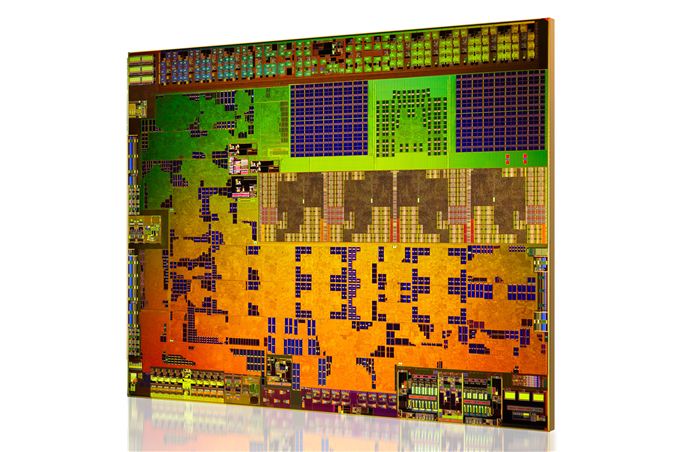The AMD Kabini Review: A4-5000 APU Tested
by Jarred Walton on May 23, 2013 12:00 AM EST
Anand is covering AMD’s latest Kabini/Temash architecture in a separate article, but here we get to tackle the more practical question: how does Kabini perform compared to existing hardware? Armed (sorry, bad pun) with a prototype laptop sporting AMD’s latest APU, we put it through an extensive suite of benchmarks and see what’s changed since Brazos, how Kabini stacks up against Intel’s current ULV offerings, and where it falls relative to ARM offerings and Clover Trail. But first, let’s talk about what’s launching today.
AMD has a three-pronged assault going out today: at the bottom (in terms of performance) is their 2013 AMD Elite Mobility Platform, formerly codenamed Temash. The main subject of this review is the newly christened 2013 AMD Mainstream APU Platform, aka Kabini. And at the higher end of the spectrum we’re also getting the Richland update to Trinity, which AMD is calling their 2013 Elite Performance APU Platform. We’ll cover all of these with Pipeline pieces, but here’s the overview of the Kabini parts:
In total there are five new Kabini APUs launching: one 25W part, three 15W parts, and one 9W offering. The hardware is the same from the architectural side of things, with the A-Series parts coming with four Jaguar CPU cores and supporting DDR3L-1600 while the E-Series will be dual-core with DDR3L-1333 on two of the models and DDR3L-1600 on the highest performance option. The GPUs in all cases will be fully enabled 128 core GCN architecture parts, but clock speeds range from 300MHz on the 9W part up to 600MHz on the 25W part, with the 15W parts filling in at clocks of 400-500MHz.
AMD provided plenty of material to discuss, and as usual there’s a lot of marketing material that we don’t need to get into too much. For those of you that want to see the AMD slides, though, here’s the full Kabini presentation gallery. Or if you're really interested, I've put the full 2013 Mobility Platforms deck into our galleries.

















130 Comments
View All Comments
georgec84 - Thursday, May 23, 2013 - link
These chis look great! I hope it can provide AMD with a small spark. They certainly seem to be looking up compared to 2 years ago.Nintendo Maniac 64 - Thursday, May 23, 2013 - link
I think it would have been interesting if Anand tested the CPU against some older mid-range to high-end CPUs. From my own assessments it looks like Jaguar has slightly better IPC than K8 and is overall comparable to the original Phenom (though obviously without the huge power consumption).JDG1980 - Thursday, May 23, 2013 - link
I really want to see a comprehensive rundown of single-threaded tests with constant clock rate. We have a rough idea of which architectures have better IPC, but I'd like to see some hard numbers.Streetwind - Thursday, May 23, 2013 - link
This is the first real step forard for AMD I've seen in nearly a decade... everything else were minor clock speed bumps, experimental architectures that ended up being slower clock-for-clock than the old ones, big iGPUs and shuffling around its product stack to target a changing market with the same technology.The performance advantage Intel has accumulated over the years means that AMD can still only really compete via price, but Kabini is finally the kind of product that attempts to narrow the gap with the competition again. Please AMD, more of this! Maybe in one or two years we the consumers will have a real choice in the x86 market again if you keep it up.
KaarlisK - Thursday, May 23, 2013 - link
Regarding memory performance: as I understand it, Kabini supports two DIMMs, but only single-channel.darkich - Thursday, May 23, 2013 - link
Why are you always comparing that dual core ARM chip?Why not Octa chip?(like, the best currently available ARM chip)
And why always avoid using Geekbench, but instead use a heavily software dependant tests?
This always seems to be case when dealing with ARM on this site.
Really, it looks like a deliberate undermining of the architecture, in my mind.
kyuu - Thursday, May 23, 2013 - link
One: the "octa chip" is really quad-core.Two: Geekbench is not a great benchmark utility, especially when comparing cross-platform.
Three: Attributing an anti-ARM agenda to this website is pretty freakin' silly.
darkich - Thursday, May 23, 2013 - link
One: the chip has 4+4 independently operated core clusters.Operating at low power cores makes for a very advanced solution, compared to big cores revving down for a certain task.
Besides, what does your remark have to do with what I said?
My point is, Octa is a FAR more capable ARM chip than the one used in this comparison.. yet it doesn't cost more, and consumes up to 70% less power.
Two: as opposed to what? Comparing Chrome for Android with Chrome for Windows?
Geekbench is not perfect, but it is the best you can try when comparing across platforms.
It is the ONLY credible comparison of pure processing abilities in this case.
Three: answer the first two then. What am I missing here?
darkich - Thursday, May 23, 2013 - link
Correction..I meant two modules (core clusters), with 4 cores each, of courseWilco1 - Thursday, May 23, 2013 - link
And those 2x4 cores can run simulataneously with the right software, hence the name Octa.I agree with darkich that Anand always appears to show ARM in the worst light, first by only showing JavaScript browser tests rather than native code benchmarks, and second by insisting on the Chrome browser rather than the stock or fastest available browser. For example Geekbench shows that Exynos Octa easily beats Bobcat at the same frequency:
http://browser.primatelabs.com/geekbench2/compare/...
This means Jaguar will get very close to A15 - until Cortex-A57 is released of course.